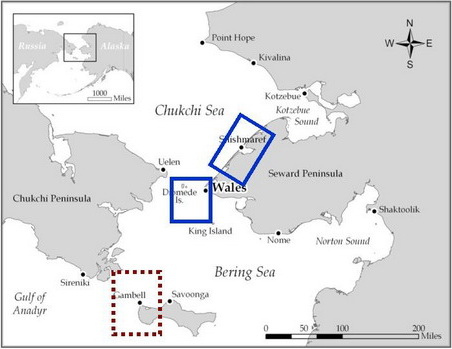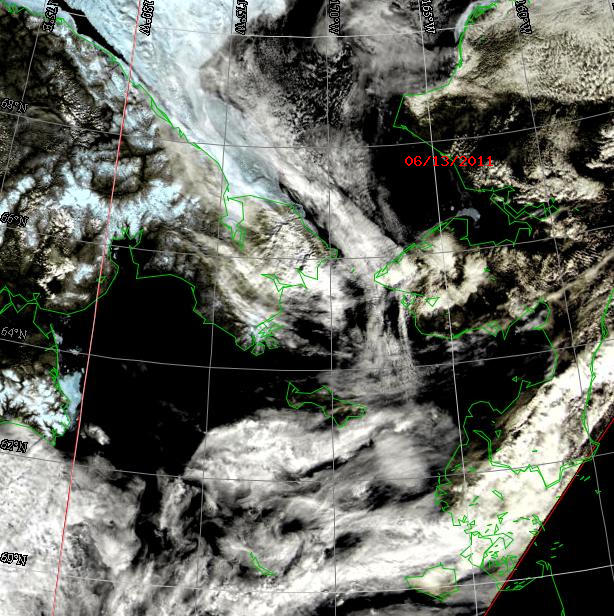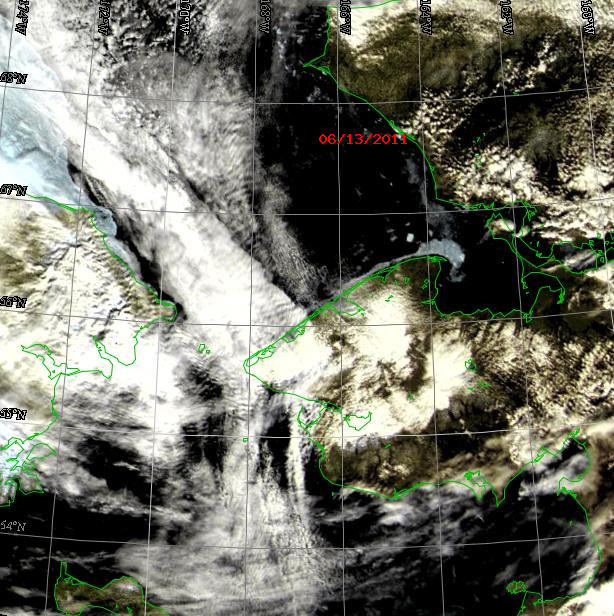Assessment of Current Ice Conditions Relevant to Distribution and Access of Walrus
Near St. Lawrence Island
Sea ice breakup in the Bering Sea is about 2 weeks or more ahead of schedule. Reports from Gambell and the satellite imagery show that the Bering Sea is nearly sea ice free with only a very few spots of shorefast ice left. There will be no "last ice" out of the Gulf of Anadyr moving past St. Lawrence Island this year. Igor Krupnik provided some Russian dates for ice out of Kresta Bay in the Gulf of Anadyr in recent times; the earliest date was 28 June, in 1930.
The combination of a short 2010-2011 winter season and warm ocean waters (North Pacific influx) produced thin ice. The major storm of 8 April really broke up the ice pack and eroded shorefast ice on many coasts. This resulted in a lot of open water for solar radiation to act. Paul Apangalook from Gambell reports that there have been no ice floes past the village since 22 May.
Wales to Shishmaref
Satellite imagery shows some shorefast ice still present near and east of Shishmaref, but this appears to be breaking up quickly. Unfortunately there have been a lot of clouds over the area, limiting a view of the ice. Lots of open water is present in the Bering Strait and southern Chukchi Sea.
5-10 Day Forecast
There is a large low pressure system presently over the central Aleutians where it will weaken rapidly. A large high pressure system will build over the Bering region Sunday, 19 June and dominate the weather into Monday, 27 June. This will result in clearing skies and winds generally less than 20 knots, however, with lots of open water seas can get as high as 6 feet.
Arrows show wind direction and wind speed in knots



Remote Sensing Images


Observations and Comments
Observations of Sea Ice Development
17 June 2011 - Curtis E. Nayokpuk; local observer in Shishmaref
Shishmaref hunters had a very good Oogruk (bearded seal) season when wind and current allowed access through scattered pack ice. There was a late season concentration of Oogruk in the near-shore pack ice due to the open sea and lack of any ice in the Chukchi Sea/Arctic Ocean. Very few walrus were harvested this spring and hunters are out in the remaining coastal ice but most of the walrus are farther north this late in the season.
